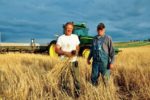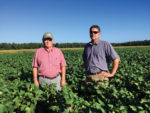What I've Learned from No-Tilling
No-Till, Cover Crops and Data Help Coax Yields from Thin Soils
Cecil and Steele Byrum pull out all the stops to produce quality crops on the thin, sandy coastal soils of southeast Virginia.
Read More










